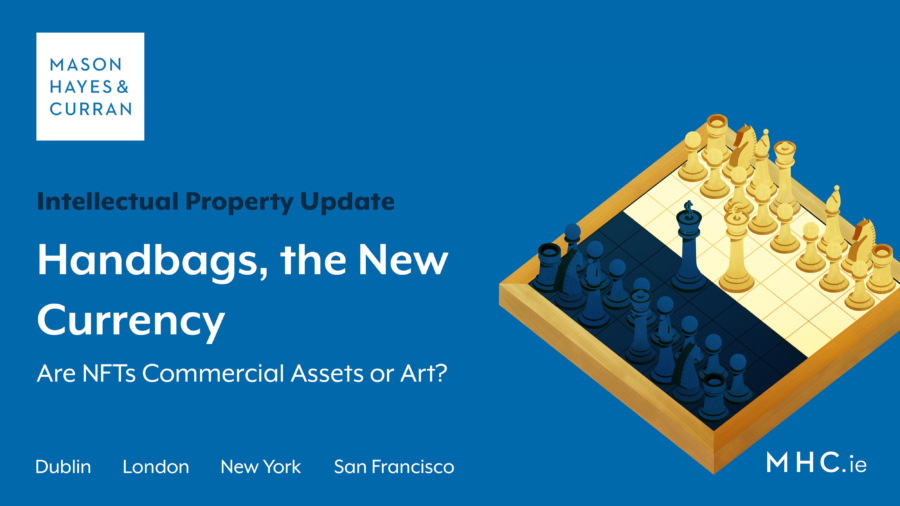
In February 2022 in the US, the creator of the MetaBirkin NFTs, Mason Rothschild, found himself on the receiving end of a cease-and-desist letter from Hermès who are the designers of their iconic Birkin handbag. Rothschild had created 100 NFTs depicting Birkin-like handbags covered in fur. In response, Rothschild sought to rely on his First Amendment right to free speech and by extension, his right to create art based on his interpretations of the world around him. He claimed the MetaBirkins were also commentary on the fashion industry’s history of animal cruelty and its current approach of fur-free initiatives.
This year, the battle has gone to trial in the US where Hermès is suing Rothschild for trade mark infringement. Lawyers for Hermès explained that there were two different cases being tried:
- That there was a likelihood of confusion for consumers as to who was behind the NFTs’ creation, and
- That there had been damage to the Birkin brand through dilution; specifically that the distinctive character of the brand had been damaged
Additionally, Hermès made claims such as misappropriation of the Birkin trade mark, cybersquatting, injury to business reputation amongst others.
Motion to dismiss
Rothschild initially sought to have all claims dismissed on the basis that the MetaBirkin NFTs are protected artistic expressions under the test set out in the US case of Rogers v Grimaldi. The test identifies that users of trade marks are protected against infringement claims if their use is both an artistic expression and does not explicitly mislead consumers. Rothschild argued that both requirements of the US-based defence had been met. There is not a similar defence to trade mark infringement established in the EU.
Hermès counter-argued that the court only needs to consider the traditional test of whether there is a likelihood of confusion between the MetaBirkin and the Birkin brand. Hermès added that the additional use of ‘MetaBirkin’ in the website address and on social media was use of the trade mark and not artistic expression. The court found that the MetaBirkin NFTs qualified as artistic works and therefore were subject to the test in Rogers. However, the court found that Hermès had put forth sufficient facts to suggest that Rothschild’s use of ‘MetaBirkin’ was not artistically relevant to the works and could be explicitly misleading as to source, sponsorship or affiliation. The court ultimately refused to dismiss the claims being made against Rothschild. In response, Hermès sought a summary judgment – that being a judgment for one party against another party without a full trial – but this was also denied.
On a separate note, the court acknowledged that had the MetaBirkins been virtual wearables for metaverse spaces, the works could be considered ‘non-speech commercial product[s]’.
The trial
Rothschild, who sold the NFTs for around $450 each, argued at trial that the NFTs were part of an artistic experiment. Actual Hermès Birkin bags can cost as much as $200,000. Rothschild’s aim was to see if he could sell the MetaBirkins for ‘almost nothing’ to test whether it was the image or the actual product that is thought to be of value. Despite this, the NFTs went on to resell for thousands of dollars, with Rothschild receiving 7.5% in royalties.
Hermès argued that the project is akin to a commercial enterprise where Rothschild is making financial gain from associating with the Birkin brand as well as causing consumers to incorrectly believe the NFTs are affiliated with Hermès. According to Hermès, there have been several consumers that have mistaken the NFTs as being affiliated with their brand.
On the other hand, Rothschild has included a disclaimer at the bottom of his website stating ‘We are not affiliated, associated, authorized, endorsed by, or in any way officially connected with the HERMES, or any of its subsidiaries or its affiliates. The official HERMES website can be found at https://hermes.com/.’ Hermès argued that the disclaimer has increased the likelihood of confusion as it ‘excessively’ uses the Hermès brand and links to their website.
The matter went before a jury who ultimately returned its verdict in favour of Hermès, finding that Rothschild’s MetaBirkins were likely to confuse consumers. The jury awarded Hermès $110,000 for intellectual property infringement and an additional $23,000 for the cybersquatting committed when Rothschild used a domain name confusingly similar to one used by Hermès.
What does this mean for NFTs in Ireland and the EU?
This trial is the first of its kind. The courts have never before considered the trade mark rights surrounding NFTs, never mind in the context of balancing against the right of artistic expression. While this case is before a US court, it could serve as a guiding precedent for matters concerning trade mark rights in relation to NFTs in the EU, in that there can be a likelihood of confusion amongst consumers as to source.
There are also statutory protections in place in both Ireland and the EU that seek to protect trade marks from use that could give rise to a likelihood of confusion or that could be detrimental to a brand’s reputation. However, the European Union Trade Mark Regulation stipulates that the proprietor of a trade mark is entitled to prevent third parties who do not have their consent, from using in the course of trade a sign that is identical or similar to theirs. This can be irrespective of whether the mark is for identical or similar goods and/or services, provided the proprietor has a reputation in the Union and where use of that sign ‘without due cause’ takes unfair advantage or is detrimental to the distinctive character or repute of the proprietor’s trade mark. This creates an exception where third parties can use an identical or similar sign to that of the proprietors, provided they do so with due cause.
The extent of what is considered ‘due cause’ has not been established by EU legislation. However, case law suggests the courts will focus on either the necessity or justifiability of the use. In the UK case of Ate My Heart Inc v Mind Candy Ltd, Mosh Music Ltd [2011][1], the courts applied the traditional likelihood of confusion test, but Mr Justice Vole recognised that although there was no specific parody defence, parody may be relevant in determining whether the use was with due cause. This suggests that freedom of expression might be considered ‘due cause’, but it has yet to be further tested before the courts. While there is no Irish or EU equivalent to Rogers, this provision may act as a similar test for considering freedom of expression as an exceptional use to someone else’s trade mark.
It is therefore interesting to see that the US court and jury have found in favour of a trade mark proprietor rather than an artist. It will equally be interesting to see whether Ireland or the EU would take the same approach if faced with determining an NFT trade mark dispute.
For expert advice on successfully protecting your organisation's IP rights, contact a member of our Intellectual Property team.
The content of this article is provided for information purposes only and does not constitute legal or other advice.
[1] [2011] EWHC 2741 (Ch)







